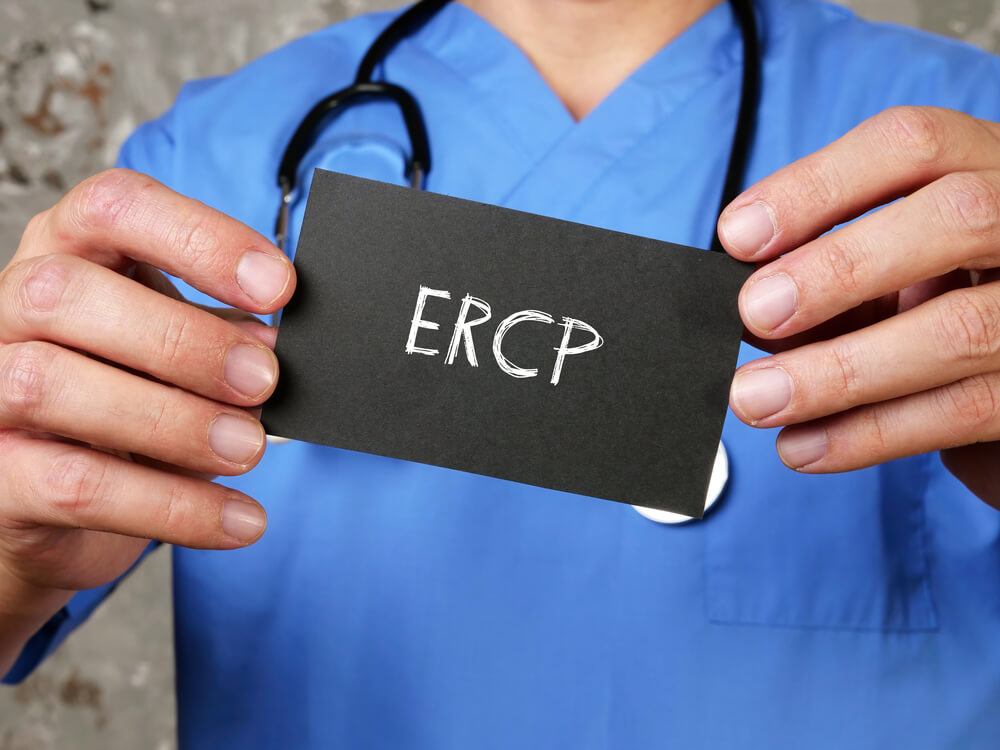In the realm of modern medical diagnostics and interventions, Endoscopic Retrograde Cholangiopancreatography, or ERCP, plays a crucial role in the evaluation and treatment of conditions affecting the bile ducts and pancreas. This advanced procedure is a blend of endoscopy and fluoroscopy, offering physicians a detailed view of the intricate structures within the digestive system.
In this comprehensive guide, Dr. Omar Rashid and his expert team will explore what an ERCP is, the procedure itself, and shed light on why and how it is performed.
Understanding ERCP
What is an ERCP?
ERCP, or Endoscopic Retrograde Cholangiopancreatography, is a specialized medical procedure used to diagnose and treat problems in the liver, gallbladder, bile ducts, and pancreas. This procedure combines two essential components: endoscopy and fluoroscopy. Endoscopy involves the use of a flexible, lighted tube with a camera at its tip (endoscope), while fluoroscopy is a real-time X-ray imaging technique.
Why is ERCP Performed?
ERCP is typically recommended for the evaluation and treatment of conditions such as:
- Bile Duct Stones: To locate and remove stones that may be causing obstruction in the bile ducts.
- Bile Duct Narrowing (Stricture): To widen narrowed bile ducts and improve bile flow.
- Tumors or Growths: To investigate and obtain biopsy samples from suspected tumors or abnormal growths.
- Pancreatic Diseases: To examine and treat conditions affecting the pancreas, such as chronic pancreatitis or pancreatic pseudocysts.
- Fluid Drainage: To drain fluid collections, known as pseudocysts, that may form in the pancreas.
- Sphincterotomy: To cut the muscle (sphincter) in the opening of the bile duct or pancreatic duct, facilitating better drainage.
The ERCP Procedure

1. Preparation
Before the commencement of an Endoscopic Retrograde Cholangiopancreatography (ERCP), meticulous preparation is paramount. Patients are advised to undergo a period of fasting for several hours. This dietary restriction is designed to empty the stomach and the duodenum – the initial segment of the small intestine. The significance of this fasting is twofold: it enhances the visibility of the internal structures during the examination, and it provides a more conducive environment for the procedural steps that follow.
2. Anesthesia
The ERCP procedure is performed under sedation, ensuring the patient’s utmost comfort and relaxation throughout the duration of the process. Sedation induces a state of controlled drowsiness, effectively minimizing the patient’s awareness of the procedural intricacies. This not only contributes to a more comfortable experience but also allows the healthcare team to carry out the examination with precision and focus.
3. Endoscope Insertion
Once the patient is adequately sedated, the next step involves the careful insertion of the endoscope. This flexible and slender tube, equipped with a camera at its distal end, is introduced through the mouth, guided along the esophagus, and ultimately positioned within the stomach. The journey continues as the endoscope makes its way to the duodenum, capturing real-time, high-quality images of the surrounding structures, including the bile ducts and pancreatic ducts.
4. Contrast Dye Injection
To enhance the visibility of the intricate ductal systems, a contrast dye is injected through a small tube directly into the bile and pancreatic ducts. This dye serves as a luminescent guide, making the internal structures vividly visible on X-ray images obtained through fluoroscopy. This crucial step ensures that the healthcare provider has a clear and detailed view of the ductal network, laying the foundation for accurate diagnosis and potential therapeutic interventions.
5. X-ray Imaging
As the contrast dye courses through the bile and pancreatic ducts, real-time X-ray images are captured. These dynamic images offer a continuous and detailed view of the ductal pathways, allowing the healthcare provider to identify any anomalies such as stones, strictures, or tumors. The interplay of contrast dye and X-ray imaging unveils the inner landscape, guiding the healthcare team in their diagnostic assessments.
6. Intervention and Treatment
In the event that abnormalities are detected during the ERCP procedure, the healthcare provider may opt for therapeutic interventions. These may include the removal of stones causing obstruction, obtaining biopsy samples for further analysis, or performing a sphincterotomy. A sphincterotomy involves cutting the muscle at the opening of the bile or pancreatic duct, facilitating improved drainage and alleviating issues identified during the examination.
7. Post-Procedure Observation
After the ERCP procedure is successfully completed, patients enter a post-procedural observation period. This involves monitoring for a short duration to ensure there are no immediate complications. Patients, still under the residual effects of sedation, are carefully observed for vital signs and overall well-being. Once deemed stable, individuals can typically resume normal activities after a period of recovery from sedation.
How is ERCP Done: A Closer Look
ERCP Step-by-Step
- Preparation: Fasting for several hours before the procedure to empty the stomach and duodenum.
- Anesthesia: Administered to ensure patient comfort and relaxation.
- Endoscope Insertion: The flexible endoscope is guided through the mouth, esophagus, and stomach to reach the duodenum.
- Contrast Dye Injection: A contrast dye is injected into the bile and pancreatic ducts.
- X-ray Imaging: Real-time X-ray images are captured, revealing the structure and condition of the ducts.
- Intervention and Treatment: If necessary, therapeutic interventions are performed, such as stone removal or sphincterotomy.
- Post-Procedure Observation: Monitoring for a brief period to ensure there are no immediate complications.
Risks and Considerations

hile ERCP stands as a valuable diagnostic and therapeutic tool, it is essential to recognize that, like any medical procedure, it is not without its associated risks. The healthcare team takes every precaution to ensure safety, but understanding potential complications is crucial for informed decision-making. Here are some considerations regarding the risks involved in ERCP:
1. Infection
As with any invasive medical procedure, there exists a minimal risk of infection with ERCP. Despite the rigorous adherence to sterile techniques and stringent infection control measures, the introduction of an endoscope into the digestive system, where natural bacteria reside, can pose a slight risk of infection. However, it’s important to note that the risk is generally low, and the benefits of accurate diagnosis and potential treatment often outweigh this minimal concern.
2. Pancreatitis
In rare instances, ERCP can lead to pancreatitis, an inflammation of the pancreas. Pancreatitis occurs when digestive enzymes become activated within the pancreas, causing inflammation and potentially leading to pain and other complications. While the incidence of pancreatitis after ERCP is relatively low, healthcare providers carefully assess each patient’s risk factors and take precautions to minimize the likelihood of this serious complication.
3. Bleeding
The risk of bleeding is a consideration during and after ERCP, particularly when therapeutic interventions, such as stone removal or sphincterotomy, are performed. The manipulation of tissues and vessels within the digestive system can occasionally result in bleeding. However, it’s crucial to emphasize that bleeding is typically minimal and manageable. The healthcare team is well-equipped to address and control any bleeding that may occur during or after the procedure.
4. Perforation
Though extremely uncommon, perforation – the tearing of the gastrointestinal tract – is a potential risk associated with ERCP. The endoscope’s movement within the digestive system carries a remote risk of unintentional perforation. It’s important to highlight that this complication is exceedingly rare and that healthcare providers take extensive precautions to minimize the risk. The benefits of ERCP, when medically necessary, often outweigh the minimal likelihood of perforation.
Mitigating Risks and Enhancing Safety
While these risks are outlined, it’s crucial to understand that healthcare providers undergo comprehensive training and follow strict guidelines to ensure the safety of ERCP procedures. Additionally, patients can contribute to their own safety by:
- Providing thorough medical histories to the healthcare team.
- Communicating any allergies, especially to contrast dye or sedation medications.
- Following pre-procedural fasting and preparation instructions meticulously.
- Reporting any unusual symptoms or concerns promptly after the procedure.
Finishing Thoughts
Endoscopic Retrograde Cholangiopancreatography (ERCP) is a sophisticated medical procedure that has significantly advanced our ability to diagnose and treat conditions affecting the bile ducts and pancreas. By combining endoscopy with fluoroscopy, healthcare providers can obtain detailed insights into the internal structures of the digestive system, enabling them to address a range of issues effectively. If your healthcare provider recommends an ERCP, understanding the procedure and its purpose can help alleviate concerns and contribute to a more informed healthcare journey. Always consult with your healthcare team for personalized advice and guidance tailored to your specific medical needs.
That said, if you’d like to learn more about the procedure, consider scheduling an appointment with our experts today.


